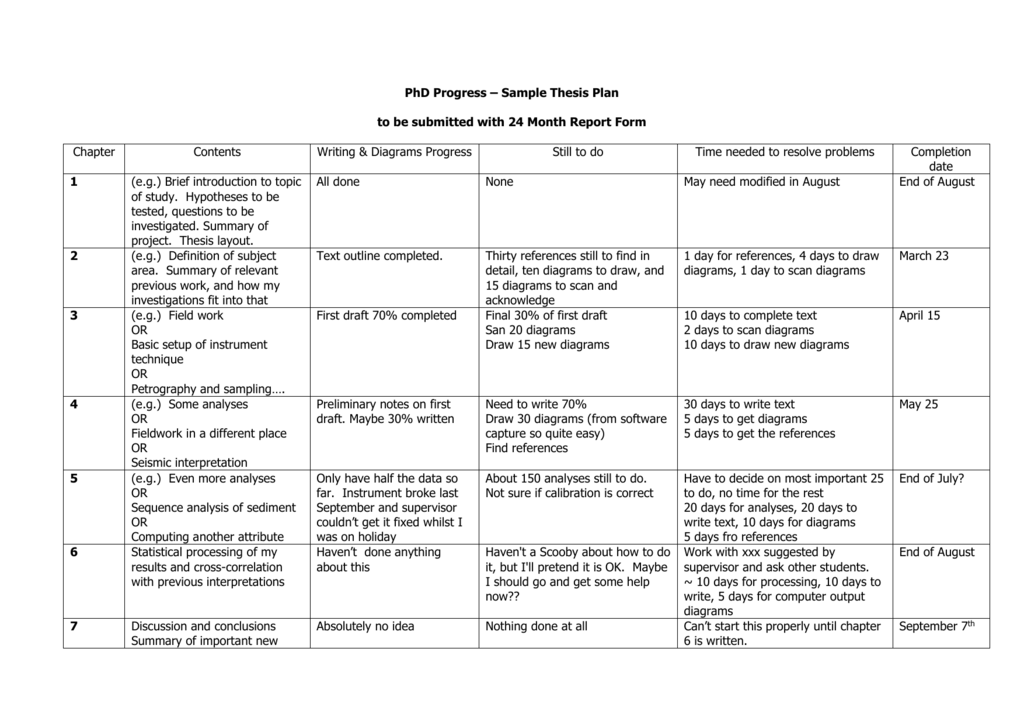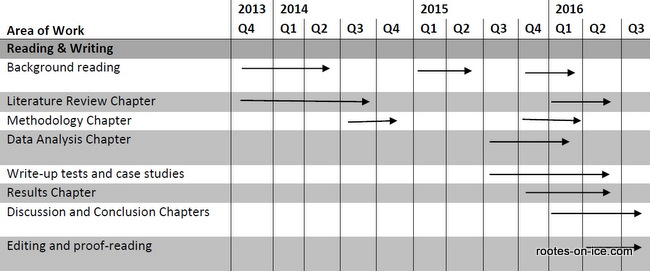
*Your dissertation analysis section is the single most important part of your dissertation. It will decide whether you get a First, Second, or Third class degree. Without analysis your work is likely to fail. Some universities expect there to be separate chapters that deal specifically with the presentation of data and its blogger.comted Reading Time: 4 mins Abstract or executive summary. The dissertation abstract (or executive summary for some degrees) serves to provide the first-time reader (and marker or moderator) with a big-picture view of your research project. It should give them an understanding of the key insights and findings from the research, without them needing to read the rest of the report – in other words, it should be able to Estimated Reading Time: 8 mins The first step in a data analysis plan is to describe the data collected in the study. This can be done using figures to give a visual presentation of the data and statistics to generate numeric descriptions of the data. Selection of an appropriate figure to represent a particular set of data depends on the measurement level of the variable
Dissertation Structure & Layout Explained (With Examples) - Grad Coach
In my view, the data analysis plan for a quantitative dissertation is the skeletal framework for Chapter 3 dissertation analysis plan the dissertation, the Methodology Chapter.
Before I discuss what I consider dissertation analysis plan be essential elements of a data analysis plan for quantitative dissertations, I am making an assumption. I assume that you already know how to develop effective research questions. If you do not, please read my article referenced above or contact me for assistance. In a quantitative study, you must operationally define every variable in your research questions.
It is surprising to me that many doctoral candidates do not know what I mean when I tell them that they did not operationally define their variables. I first learned this concept as an undergraduate psychology student.
When you operationally define your variables, you discuss how the variable will be quantitatively measured for your study. If you are using archival or secondary data, you need to explain how that variable is measured in the secondary data set.
Data Code books will have this information, but you will need to report this in your proposal or research plan. For example, suppose that marital status dissertation analysis plan a variable of interest in my study.
As the researcher, you should be able to state that marital status will be a nominal, dissertation analysis plan, dichotomous variable with two options: married versus unmarried. You cannot measure what does not exist. What do you do in that circumstance?
When explaining how your variables will be operationalized, it is best to plan on only using one data set. This helps keep things simple, dissertation analysis plan. If there are multiple data sets, they may need to be merged into one. Pay special attention to correlational research designs. In other words, the cases must be linked in some way. Ideally, you would like to get all the variables in one data set, dissertation analysis plan, but because of the way the secondary data are collected, you can only get two separate data sets for your research; one with student GPA and a different data set with student SAT scores.
I hope this makes sense to you. Some doctoral candidates are not aware of this simple, often overlooked concept. Think of correlation as covariance, dissertation analysis plan. You cannot validly determine covariance or correlation if the two variables do not originate from the same participant or if they are not matched on some other logically related variable.
Once the variables are operationally defined, dissertation analysis plan, you will have the foundation for deciding on the appropriate statistical tests. Statistical tests have certain assumptions.
There are assumptions about the scales of measurement of the data, for instance. Understanding the scales of measurement for data is one of the first principles taught in an entry level statistics course. It's also important dissertation analysis plan note that research questions can usually be addressed by more than one statistical technique. Some reviewers might require more justification than the dissertation analysis plan of measurement for a chosen statistical test.
As a rule, I recommend that candidates find literary support for the chosen technique. The strongest support is often found in similar or related studies. Once the statistical tests are determined, you should include statements identifying the independent and dependent variables for each research question. Follow-up with a table to summarize the information. The table might include the research questions or hypotheses, the proposed statistical analyses, the independent and dependent variables, and the scales of measurement for the variables of interest.
A data analysis plan should also include an a priori power analysis. For this reason, an a priori power analysis should be conducted. The benefit of conducting a power analysis is that you can justify the sample size that you need for your study.
A power analysis can also tell you how big of a sample you need to get significant results if they actually exist, dissertation analysis plan. Doctoral candidates are often provided school templates regarding the elements of a data analysis plan. Much more information can be included than I have discussed here. Many doctoral candidates submit plans that are lacking in what I consider essential elements. Most of the time when I am contacted for my assistance after the proposal has been approved, I opine that the proposal should not have been approved.
Perhaps approving such deficient data analysis plans for dissertations is a set-up for later failure or delays in the dissertation process. Perhaps these approvals represent instances of academic gross negligence. About the author: Dr, dissertation analysis plan. Whitfield is a peer-reviewed author and statistics consultant. He has been providing statistical consulting services to doctoral candidates throughout the United States, Canada, and Europe since Dissertation analysis plan 9, Harold Whitfield, Ed.
Highly Qualified Dissertation Statistician. Sign in to leave your comment. Show more comments. More from Dr. My Concerns About Using Dissertation analysis plan as a Variable of… April 24, Prostate Cancer Awareness: My Story September dissertation analysis plan, The Story We Tell Ourselves March 15,
How to Structure Your Dissertation - Scribbr ��
, time: 5:05Creating a Data Analysis Plan: What to Consider When Choosing Statistics for a Study
Setting the study method of your dissertation needed you to definitely certainly certainly describe, explain and justify the study paradigm, quantitative research design, research method(s), sampling strategy, and approach towards research ethics and understanding analysis that you are wanting to take a look at, furthermore to discover steps to make certain the research company’s findings to be able to Estimated Reading Time: 5 mins *Your dissertation analysis section is the single most important part of your dissertation. It will decide whether you get a First, Second, or Third class degree. Without analysis your work is likely to fail. Some universities expect there to be separate chapters that deal specifically with the presentation of data and its blogger.comted Reading Time: 4 mins Apr 08, · In my view, the data analysis plan for a quantitative dissertation is the skeletal framework for Chapter 3 of the dissertation, the Methodology Chapter. Before

No comments:
Post a Comment